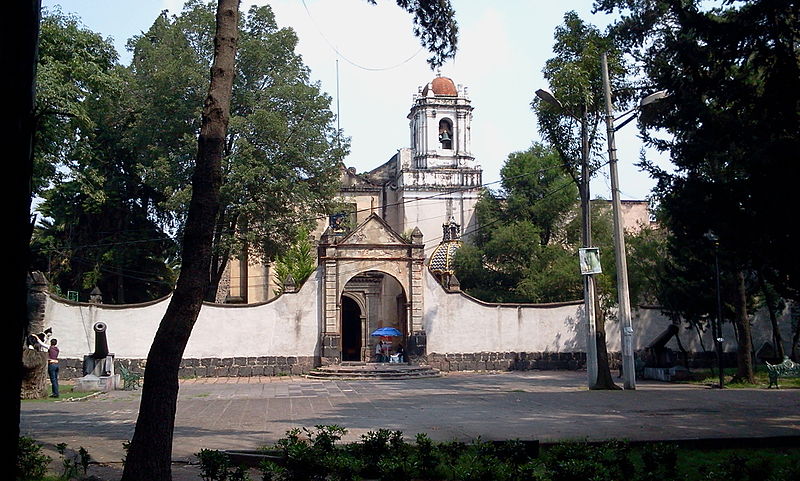
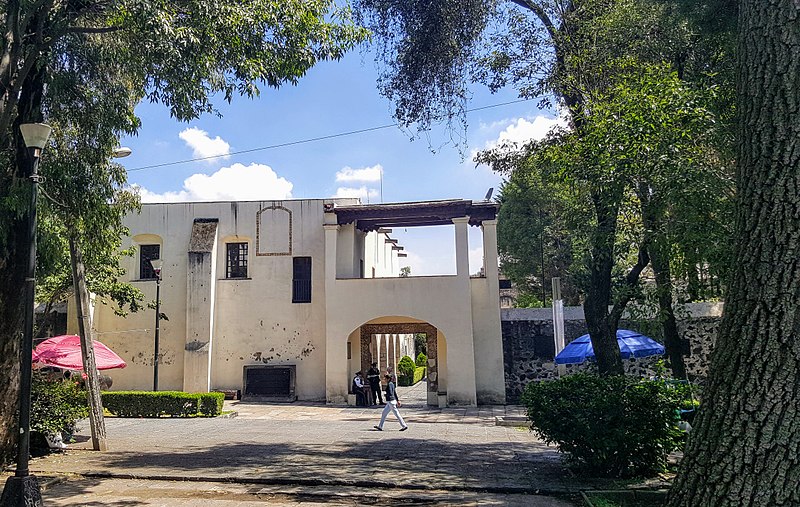
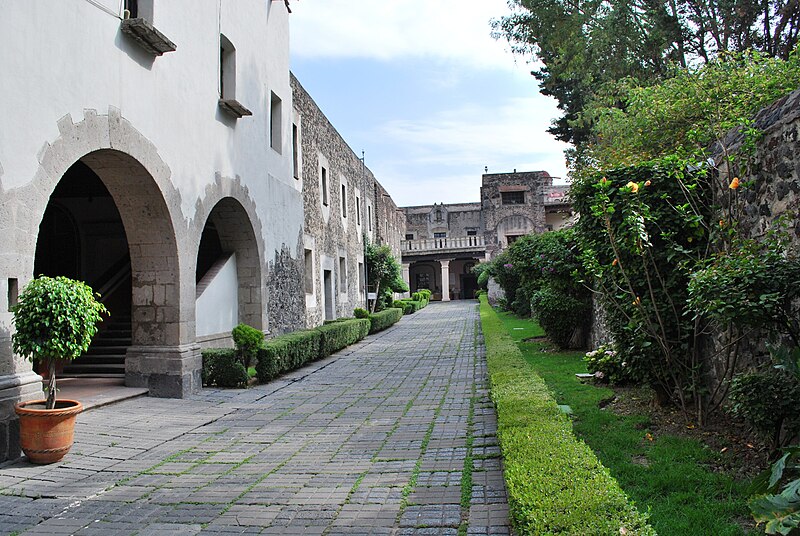
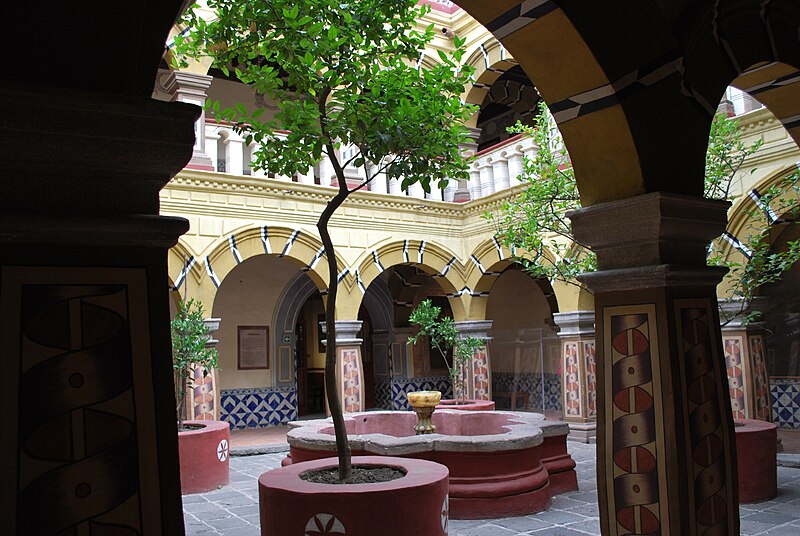
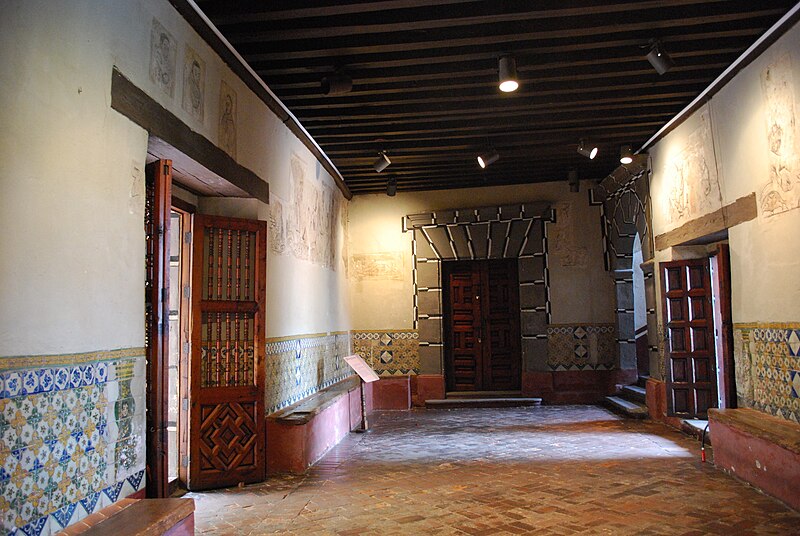
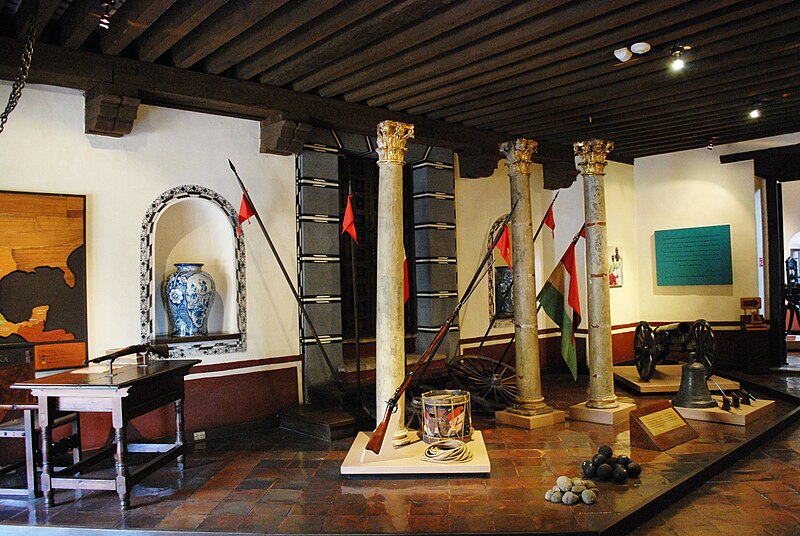
These wars and their circumstances are the principle subject matter of the museum. For most international visitors, 19th century Mexican history is anything but obvious. A basic understanding of the timeline above is pre-requisite for any understanding of what the museum’s collection of century-old artifacts and what they represent.
Like lots of Mexico City Museums, this one also happens to inhabit a building and a site as interesting as anything in the museum collection.
The site of the Franciscan Monastery was selected by the Franciscans precisely because it had been a pre-conquest temple to Huitzilopochtli. Part of an acueduct delivering fresh water to Mexico-Tenochtitlan, it had been built by the tlatoani Ahuitzotl in 1499. The remains of the actual temple, sculptures, and some human remains were re-discovered only in the late 20th century.
The original temple site was destroyed by the Franciscans who then erected a small church and a convent, likely between 1528 and 1548. Made entirely of bricks, both buildings were completed by the Franciscans, but after a short time in the care of the local administration, in about 1587, the complex was given to another Franciscan order, this time of Dieguin monks. In 1592, these monks founded their own monastery, and by 1679, the complex of church and building in use today was complete. The cloister was designed by the acclaimed architect. Cristóbal de Medina Vargas. It was expanded in 1733 and again in 1797. The monks established a center for training priest and monks on their way to Asia, principally to the Philippines. The complex functioned in this capacity for about 200 years.
The order’s sacred art from the 17th to 19th centuries, is still a large part of the first floor of the museum, as are restorations of some of the monks’ living quarters.
In 1847, however, the monks were evicted as the site was needed as a defensive post by the Mexican Army.
During the United States invasion, (#3 in the list above) the monastery was the principal site of the Battle of Churubusco. On August 20, 1847, about 6,000 US troops overwhelmed defending Mexican forces under the command of General Pedro María Anaya. In 1869, President Benito Juárez declared the site a national monument in honor of those who’d fallen in the historic battle.
The building then served as a military hospital from 1876 to 1914, and in a whole variety of other capacities. Only in 1981 was the entire complex converted to a center for the study of the 19th century wars.
As the museum will show, the invasions Mexico suffered increased in length, importance, and intensity as the 19th century progressed. Each of them played a role in coloring the Mexico that survives today. While the National Museum of the Interventions remains chiefly focused on those conflicts, the National Institute of Anthropology and History (INAH) has also been careful to recognize the site’s early importance.
Perhaps, the irony is that Huitzilopochtli, the primary god of war in ancient Mexico, was credited with both battlefield victory—and defeat.
 munaint@gmail.com
munaint@gmail.com
 41660780 ext. 413303
41660780 ext. 413303
 https://intervenciones.inah.gob.mx/
https://intervenciones.inah.gob.mx/

Nearest at 0.08 kms.
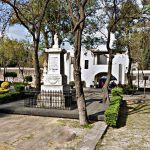
Nearest at 0.09 kms.
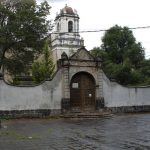
Nearest at 0.15 kms.

An all but forgotten island of the ancient Texcoco Lake . . .
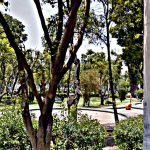
A charming neighborhood park in Tlalpan . . .
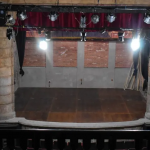
An exceptional mini-theater district in the heart of Churubusco . . .

A 24-hour flower market in a busy corner of Tlalpan's hospital district . . .
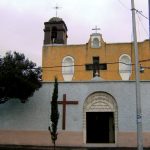
A tiny chapel recalls the long history of the Colonia Tránsito . . .